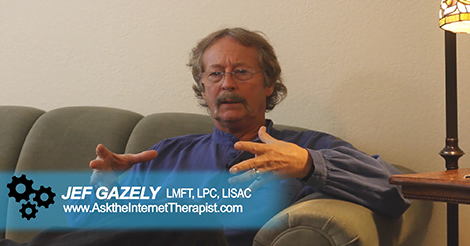The brain runs the body through a series of electrical stimuli that tell the nerves, muscles, bones, and organs what to do and how to do it. Many of these are simple impulses that run naturally, without us having to think them into action. Throughout an addict’s journey, these signals become rewired and repurposed all over. Emotional Freedom Techniques, or EFT for short, work as somewhat of a reset button, according to the experiences of Jef Gazely, a licensed therapist with multiple specialties.
Applying EFT to Addiction
“EFT… is kind of like calling up a tech person and saying ‘how do I fix this’ and they say ‘reboot the computer,” Gazely said. While it may seem too good to be true, there are many instances in the tech world where a simple reboot will do the trick. The same can be done with the brain, given that it is, in many ways, like a computer. Applying EFT to addiction treatment programs has shown to be extremely effective in several cases.
The practice behind EFT is centered around acupoints that act as small electrical factories, as Gazely puts it, throughout the body. Meridians, or rivers of energy, travel from point to point throughout the body.
The goal with EFT is to quickly remove sudden, unexpected urges that rise up and cause an addict to relapse. Gazely cited an experience he had with a chair that reminded him of smoking with his father. This experience caused him to go out and buy a pack of cigarettes. So instead of doing a diagnostic on the problem, so to speak, EFT instead causes a reboot which, according to Gazely’s experience, eradicates the urges.
Addiction takes hold of every aspect of a person’s life, rewires the brain, and enslaves the afflicted to its will. There are many cases where addiction is brought on by traumatic events, or catastrophic loss. In these events, people often suffer from PTSD (Post-Traumatic Stress Disorder), which can act as a catalyst for an addiction. There are other effective ways of treating PTSD associated with addiction and each patient is unique in which works best for their situation.
EFT includes steps on how to properly use EFT for virtually any problem, including phobias and even headaches. The first step is to identify the problem you wish to work on, in this case, we would use addiction to a substance. The next step is to identify the words you can use to represent that problem. Words like addiction, substance abuse, and dependence can represent our predicament.
Next, we have to rate the problem, and the easiest rating system is 0-10; Zero being no problem at all, 10 being the worse it has ever been. At this point, we would be using this rating system to identify how bad our urges to use or drink are. Next, we can begin what is called the tapping process, which Gazely talks about when it comes to urges. The tapping process involves tapping or pinching various acupoints that inhabit the body with reassuring words to remove the urge.
Identifying Your Addiction
The big take away from this process is the concept of identifying the problem. If you feel suddenly filled with the appetite for Drugs and or Alcohol again, it means someone or something has set off a trigger in your mind. Simply by identifying what that trigger was can help to deter the relapse. It is always important to know the enemy as much as you know yourself in order to fight back.
While we may be able to identify a majority of our triggers right off the bat, there are many that we don’t know about, or even can’t know about until they are present. This is where EFT can be so effective. These immediate and unknown triggers threaten our recovery and can send us back into the throws of addiction. Taking the time to identify them and focus on the precise trigger that brought on the sudden urge to is can mean the difference between sobriety and relapse.








